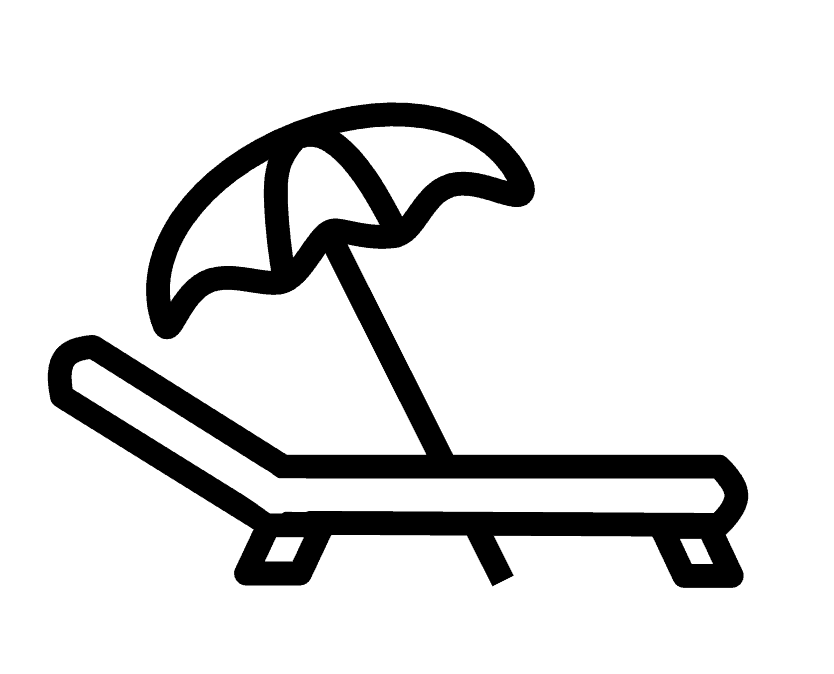Its main purpose is to offer shade but having decided on adding a Pergola, can I benefit even more by using it in the rain? I’m not thinking of the torrential downpours that worried Noah but if you can stay out in normal rain and not have to worry when you haven’t pack everything away, wouldn’t that be great? Here are the options I found from the very high-end permanent fixtures to more budget-friendly options.
Disclosure: There are affiliate links within this article, and at no extra cost, I earn a commission if you buy.
NOTES: These are things I hadn’t immediately considered when I thought about adding rain protection.
- The first issue, particularly if you are looking to retrofit your waterproof cover is that most Pergola designs have a flat roof structure. This means that water will not naturally runoff in one predetermined direction. Instead, it will at worst pool above you or potentially run exactly where you do not want it to! Adding a cover for rain may require adding some additional height to give you enough angle for the rain to run off. It does not need to be much, the minimum slope for a flat roof by building code here is 2%. (1/4″ per 1′) but 5% is recommended.
- The second issue was that a full cover will require more cleaning/clearing, even if it is retractable!
- If you get snow, then for the non-retractable methods you need to consider the loading from a build-up of snow. For attached pergolas with a solid roof, there will almost certainly be building code requirements.
Shade Cloth
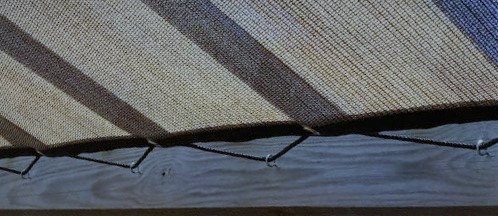
The first option may not be quite enough for some people but having used the same material for shade sails I know that it can work in light drizzle/gentle rain, as long as it is installed at an angle. The size of the holes in shade cloth mesh are small enough that it stops gentle rain and will instead cause it to ‘bead’ and run down the fabric (both the inside and outside). In heavy rain the beading water may drip before it runs down the material making it of limited benefit.
Although not suitable for heavy rain this option is usually fixed (although not necessarily permanently see the options within our How To Attach Shade Cloth Guide) so it doesn’t have the potential problems of a moving retractable system. It also maintains the breathability of the roof, as hot air can rise up and pass through the shade cloth mesh, and yet can offer a very high level of shade/protection up to 98% for some materials. They are also inherently mold and rot proof.
See our guide Types of Shade Cloth Materials or How to Attach Shade Cloth to a Pergola
Canvas
As compared to shade cloth mesh, canvas has a much tighter construction and can be made from or treated to be water-resistant, water-repellant or even waterproof. These materials are used in the top end retractable pergola cover solutions but can also be utilized for simpler DIY versions.
Cover Attached to Top of Pergola
The methods mentioned above for attaching shade cloth to the top of your Pergola would still be valid for canvas materials, making it suitable for heavier rain, as long as there is enough slope to ensure they drain. I found three different methods for attaching the cloth that if the whole roof structure of the pergola has a slope would still work. Check out How to Attach Cloth to Cover a Pergola. The main issue I can imagine is if using the batten technique you might trap water in the lower corners that may encourage the material to rot. Ensuring the water can all escape by maybe angling the battens and leaving a suitable gap at the corners should be sufficient.
Roll Retractable Canopy
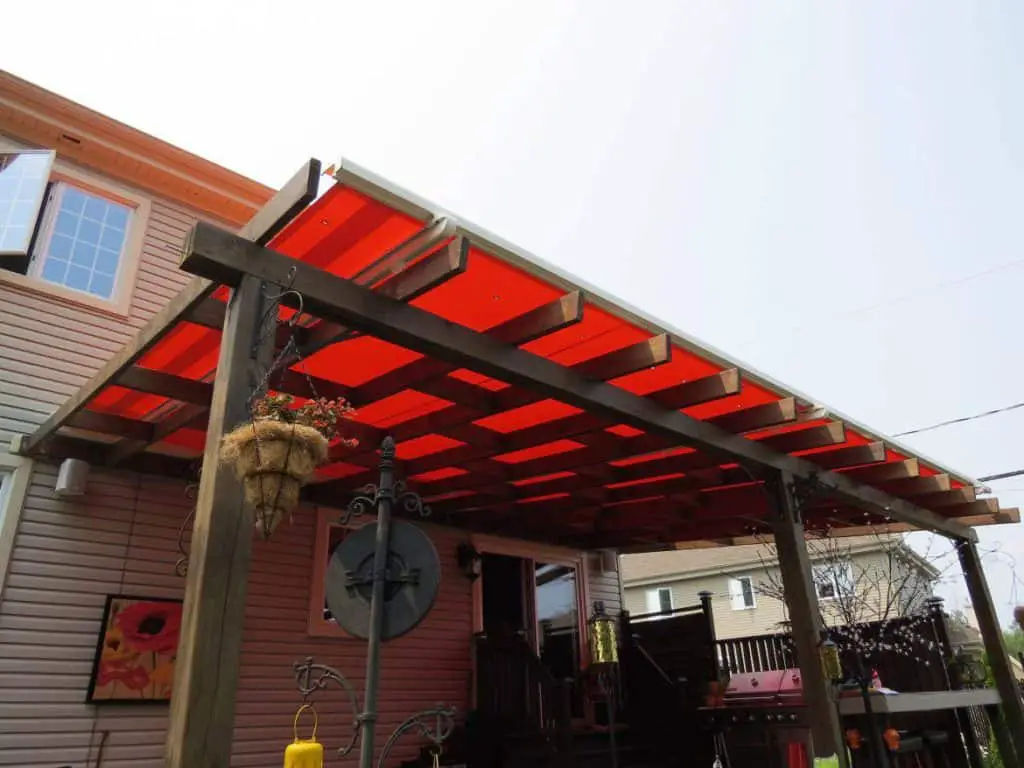
These are basically the same as a retractable patio awning but rather than having arms to support the leading edge of the shade it is supported by tracks and pulled out by means of cables. These offer a very compact and weatherproof solution for when the shade is not needed, and it is packed away, but they are not really suited for rain protection. Although the material used might be waterproof the fact that the material is only self-supported because it is under tension (it has no battens) means that inevitably when it gets wet water will end up pooling.
Single Track Canopy
The only real example of this seems to be the offering from ShadeFX Canopies. They have a single track in the middle that supports the middle of a series of battens that in turn support the shade material. The key difference is that this inherently causes the high point of the canopy to be in the middle allowing rain to be shed on either side by gravity.
This does seem to be a method that could be self-installed and even retrofitted to a pergola if you had enough clearance height.
MultiTrack Canopy
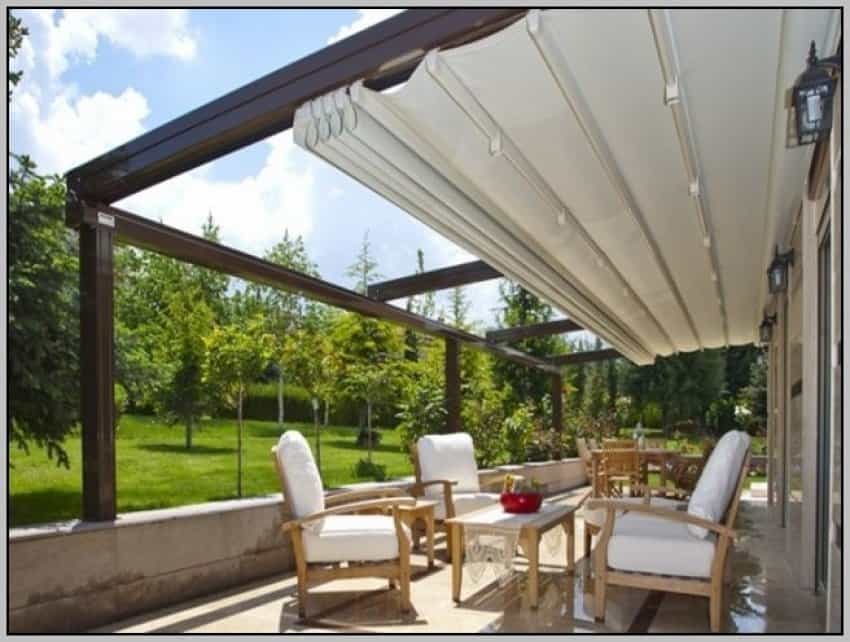
These are usually associated with outside contractor pergola installations rather than retrofit to existing structures. The pergola roof has two or more tracks to guide a series of battens that keep a canvas canopy tight as it moves to cover your pergola space. The best of these systems will have slightly curved battens that encourage the water to run to the edges of the canopy where it drains into built-in guttering that runs inside the posts!
My main issue with these designs (apart from the higher cost) is that they rarely incorporate all of the aesthetic appeal of having the rafters and/or crossbeams creating a ‘space’ when the cover is retracted.
Slide on Wire Canopy

They are designed with battens that stretch across the width of the structure but that can move along the length by being attached to wires. These battens are fitted inside the shade cloth material with a separation of between 1ft and 5 ft so that when the shade is ‘open’ the battens are held up by the wires and they, in turn, support the canvas. When the shade is ‘closed’ the battens are gathered together along the wire and the shade hangs down between them.

Depending on the design they can be opened and closed automatically with a motorized system, by means of lines (similar to those used for window blinds) or simply by having poles attached to each corner of the shade.
These are available as kits but are actually relatively straightforward in design so could easily be made at home, especially if your pergola dimensions are not too large. For bigger installations, the tension required in the wires to support the shade, especially when wet, becomes more than a standard pergola would be designed for.
For these to be successful for rain protection you need to give some consideration to the strength of the system for the additional weight of the material when covered in water. You should also think about how/where you want the water to drain. By raising one end of the battens (having the wire attached higher at one end) you can choose which end the water will run out. For larger areas, you may need a greater number of guide wires to support the battens/cloth weight and it is possible to get water to drain to both edges by making the middle of the shade higher.
Louvered Roofs
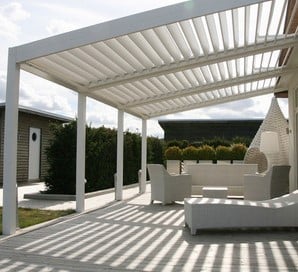
These are another high-end solution, that will probably require outside contractors to install if only to get a full warranty on the installation. They work with the same principle as window blinds with a series of slats/panels that each rotate. These panels and the required specialist frame with tilting mechanism can be made of plastic, metal or fiberglass. They can then be adjusted from fully open where the panels look like rafters to fully closed where they can form a rainproof solid surface.
Apart from the higher price, I like these designs as, when open, they still have the airy appeal of a crossbeam structure above. They are, however, not really suited to a retrofit of an existing Pergola.
Corrugated / Flat Panels
A much more cost-friendly solution, it is now possible to buy a whole array of different styles, sizes and materials with various fixings from plain old screws to more optimized solutions that are less likely to leak or make your pergola rot. In order to maintain the same amount of light, in my research, I was looking at clear or lightly tinted panels rather than changing the concept of a Pergola and going for a solid dark roof.
I was initially not interested in using these but having investigated them they are now of real interest. I like them as I could add them to my existing structures and they are compatible with other shade methods, including growing vines and they would still work with the sliding fabric panels if more shade was required.
Having checked some reviews it seems that Fiberglass panels will craze/cloud quite quickly, which will change the appearance and amount of light they allow.
The PVC panels are an improvement but are still quite brittle and susceptible to cracking (one report even suggested from hail), although they are more scratch-resistant than polycarbonate.

The strongest and longest-lasting would be the Polycarbonate panels but they are also the most expensive (2.5 x the price of PVC for the corrugated version) and can last 10-20 years!
Most polycarbonate sheets come with specialist UV coating but for residential applications, it is usually only on one side of the panel. You have to check that it is installed with the UV coating upwards.
It should be mentioned that polycarbonate sheets are susceptible to scratching so when any cleaning is required you should not use any abrasive cloths or liquid such as cream cleaners that have abrasives within them. They should ideally be cleaned with a soft cloth having been rinsed and whilst still wet with lots of soapy water.
The corrugated panels shape helps to give the sheets some rigidity and to stop them from being floppy. It is still possible to bend them following a gentle curve along the corrugation; as opposed to across them. The polycarbonate sheets are also available in flat panels that have multiple layers in a sort of honeycomb (as used in greenhouses, skylights, etc) but they can be more expensive when you add in the extra edge strips required to join them. The choice between flat or corrugated seems to be aesthetics but corrugated is quicker to install.
The downside of these clear panels is that you will see anything that falls on them, including leaves, plant sap and bird droppings which may add to the amount of cleaning required.
You might also be interested in: Planning a Pergola; What you need to think about! or if you just want to consider other forms of Pergola Shade.
Are there any covers that I have missed? Let me know in the comments below.
